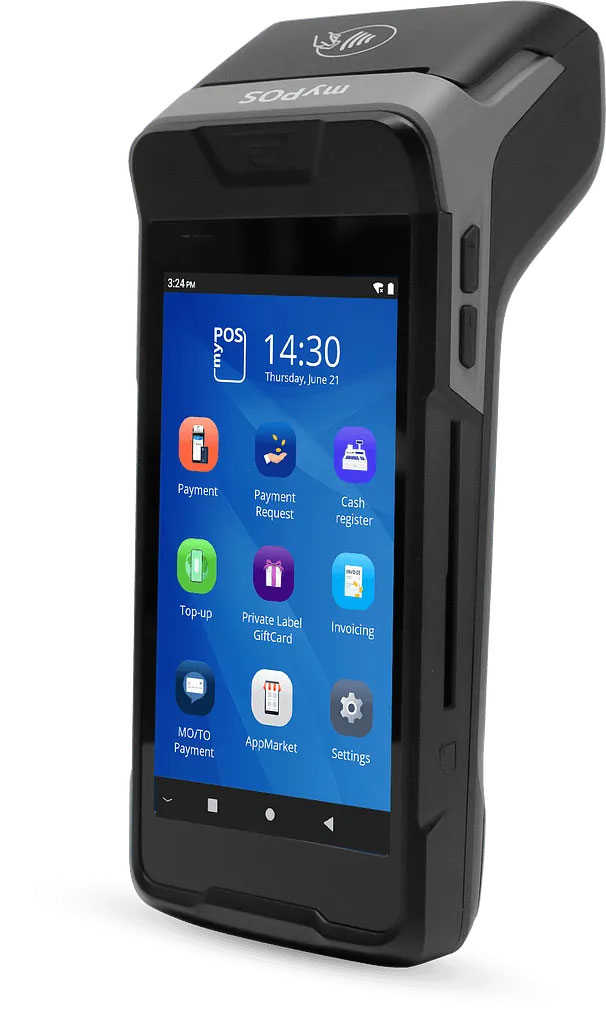Non-Public Networks Point of Sale (POS) – Coming Soon to an Outdoor Festival Near You
If it wasn’t already going the way of the dodo before the pandemic, any last vestiges of cash-based exchange were quietly swept away along with it. Of course an all-IP transactional universe does not rest on its laurels. Now in addition to cards, any personal consumer device, from your phone to your watch and other wearables are all well in play.
While this presents an irksome problem when it comes to street level charitable giving, the all-IP, mobile POS (Point Of Sale) infrastructure is ubiquitous. But that’s not to say it’s perfect. While POS is not a data capacity intensive activity – traffic volume between the POS and cloud is minimal – it needs to be fast and above all pervasively stable and secure. In mobile POS environments, lags and lost connectivity means loss of sales. Here queues need to be minimal to non-existent, and establishing predictable working latency is the first test of that requirement.
Speaking of prediction, the reader will anticipate what comes next – a most illustrative use case for the non-public mobile network anyone…
Of course POS systems are everywhere, but they are to say the least rarely found in the open pastures, forests and farmers’ fields that make perfect locations for summer outdoor events and festivals. It’s no surprise then that the very same realities faced by other mission-critical mobile IP operations, say broadcasting or public safety, are alive and well in large scale public event POS systems. Any faith that an available public wireless network will support the activity is a pipe dream. Public networks in rural areas are typically at or near capacity without any roaming visitors. Now try adding 50,000 festival visitors.
And here our brilliant use case becomes a vivid case study of precisely this novel application. But before going to the solution, let’s look at the BAU standard approach and what, in the not too distant past, were considered “solutions”, and now show stopping problems.
Public mobile not being a viable option, event organizers typically book mobile communications network service providers. Until very recently these providers were limited to extending temporary fiber lines to the broadband node and serving the event’s wireless requirements via many tens of WiFi Access Points (APs) throughout the temporary location. While this gets you stable broadband within a short distance of the WiFi AP, beyond 50 meters or so, signal quickly peters out. Often in life, they say you get what you pay for, but in the above scenario, what you get for the high cost of a temporary fiber network installation, is quite underwhelming even after weeks of skilled labor. Add to that the very real costs of sales losses, bad customer experience and to top it all off, a MUCH bigger carbon footprint, and you get far less than the price paid.
It is with these constraints in mind that we look to the case study in question, this year’s Jukolan Viesti (Festival) in Finland pictured above, a traditional nighttime orienteering competition that attracts some 50,000 visitors in a new location each year. In another Finland First, the very traditional Jukolan Viesti elected to chart a thoroughly modern mobile POS capability with a non-public mobile network.
Jukolan turned to Finnish turnkey POS solution provider Helppari whose systems have been designed precisely to run atop non-public LTE across the great Finnish outdoors. The only external requirement is a temporary wireless frequency license for theat location which is rather easy to acquire.
As fast to install as to tear down, and as simple as it is to set up and run, labor and time is fractional. To make the magic happen, one simply needs to connect fiber to the Core and the Core to the mobile eNodeB, all ruggedized, professional grade equipment. Once, and very quickly, up and running the non-public network’s considerably higher power and coverage dwarfs WiFi Mesh, providing significantly better, more reliable, and much wider ranging signal. From there, additional benefits include POS OS options that include the much less expensive, more flexible Android-based readers (pictured at right) that also boast much longer battery life.

It’s no wonder that the core business needs of the festival, namely reliable mobile visitor payment, drives the case for non-public networks in the context of large scale outdoor events. Once there, it’s hard not to notice all of the many other use cases that could be put into play on the same network from public safety to real-time HD video broadcast contribution. The very same network can support different traffic classes that can be prioritized and capacity limits defined per UE. Need to add more users and applications to the network? Simply slip in the network’s SIM card and you are away to the races.
COMPARISON between WiFi and 5G Non-Public Network (NPN) for outdoor events
| Requirements | WiFi | 5G Non-Public Network (NPN) |
|---|---|---|
Quality and stability | WiFi quality is good for non critical applications that can tolerate bandwidth fluctuation | Connectivity quality can be guaranteed and differentiated between users |
Security and privacy | Security is at the level of regular, consumer internet | Security is based on SIM cards |
| Latency and bandwidth | Latency and bandwidth is based on number of simultaneous users | Latency and bandwidth can be tailored between users |
| Number users connected | Depending on application | Can be tailored per use case |
| Price, investment and ROI | Low equipment cost but limited coverage area | Higher equipment cost but larger coverage area |
| Requirements | Basic internet set-up skills | Basic internet set-up skills + frequency license |

While I may easily get lost in the woods, with that kind of connectivity, my second rate orienting skills will be made up for by a first rate private network service.
Most frequent questions about mobile POS and temporary outdoor wireless
- What kind of solution is the best to provide temporary internet connections for a large public event?
If the need is to provide internet access for event audiences, a public mobile network or local WiFi hot-spot are the best solutions. In these cases, temporary congestion does not cause too much of a problem.
However, If the mission is to provide Internet connectivity for tens or hundreds of POS terminals or TV cameras, the non-public mobile (NPN) network is the best solution. - How can I get reliable mobile internet outside?
Where once the only event-supplied mobile connectivity solution was WiFi, NPN provides a dramatically better solution for delivering mobile and/or fixed Internet for large outdoor or indoor environments. While ensuring the ease of use and access of WiFi, it dramatically extends flexibility, power, range, reliability and security. While backhaul is always a question, independent of whatever mobile access solution is in play, WiFi or NPN, access network congestion is generally the primary issue at large public events, and NPN is the very best way to reliably resolve it. - Common WiFi mistakes when providing internet connections outdoor:
Providing outdoor WiFi requires specially-designed outdoor WiFi APs (Access Points) that are significantly more expensive than standard, home WiFi APs. Adding to the cost and complexity, the size of crowds and the actual number of simultaneous users is difficult to predict and therefore impossible to test. Thus to ensure enough “network headroom” it is recommended to overestimate the user base resulting in more APs, more cabling, more power and more cost. - Can 5G NPN resolve Wi-Fi usual problems outdoors?
Using 4G or 5G NPNs is significantly easier in large installations than WiFi. You need only one radio to cover a large area, which means significantly less cabling work. If you need to have some redundancy in the system, simply add another basestation. - How much internet does a POS need?
Point of Sales terminals require a very limited amount of capacity – typically as low as 100 kbps. Certainly speed, or better stated, working round trip latency is more important as well as how quickly a new connection can be established. - What do I do if I need the internet for many point-of-sales?
Contact us or send an email sales (a) cumucore (dot) com and we can help you to find a local partner.. - Countries where your company can acquire a temporary wireless frequency license:
Frequencies for NPN are available at least in Finland, Germany, Switzerland, Netherlands, UK and the USA. More and more countries that are taking advantage of NPN technology, if in question please contact your local frequency authority.






